
Panel Discussion
Voices from Universities,
‘What We Want for SINET5!’
For the Creation of an Attractive Academic Information Infrastructure
Moderator:
Kazutsuna Yamaji, Associate Professor, NII
Panellists:
Masashi Oe, Assistant Professor, National Astronomical Observatory of Japan (NAOJ)
Youki Kadobayashi, Associate Professor, Nara Institute of Science and Technology
Masaharu Munetomo, Professor, Hokkaido University
Masako Suzuki, Shizuoka University Library
Koji Ando, Mokha Inc.
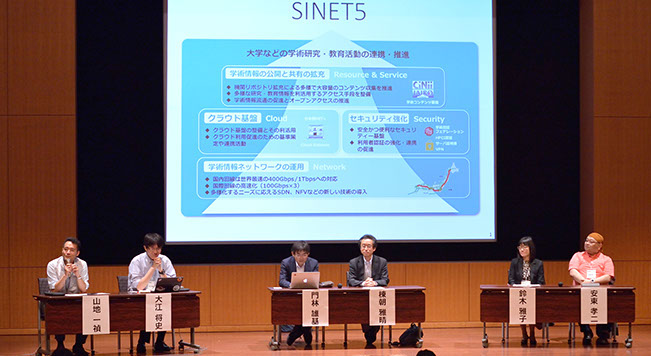
The Open Forum closed with the Panel Discussion, which was the first attempt for NII. The panellists from different fields ranging from network, security, cloud, and content discussed what is required for the education and research environment and what they expect from NII.
<Introduction>
The panel discussion started with an introduction of each panellist and what they think about/hope for NII.
Prof. Oe argued that the high bandwidth network is crucial for the work of the observatory. NAOJ has been using SINET4 for the transmission of large amounts of data, but they require a better network for more advanced research in the future. The relationship between the R&D network and its users should collaborate, but this is not always easy. For the future SINET5, He hopes that the architecture of R&D network will include long-term plans of organisations like NAOJ, so that it encourages the Nobel Prize level of research like a large scale observatory project.
Prof. Kadobayashi argued that NII must initially re-define its role and function. He pointed out a potential of security issue that is inherent in the current NII’s structure of centralising everything including the network, authentication, digital archives, and academic information. He also argued that NII must engage in the development of human resources who will lead the future of the Informatics.
Prof. Munetomo collaborates with NII for the development of inter-clouds. As a leader of this field, he hopes that NII will connect not only the network but also people. Instead of providing anything and everything, he argues that NII must simplify and prioritise its services and focus on the services that have a high demand from the academic community.
Ms Suzuki is supporting NII’s works as a librarian in such aspects as library cataloguing, institutional repository, and JUSTICE, which is a collective e-journal negotiation. As a librarian, she hopes for NII to engage more with university libraries in such aspects as management of academic data, remote back-up of repositories, and cloud computing of library systems.
Mr Ando is the only representative from the private sector, but formerly worked at the Information Technology Center at the University of Tokyo. He shared his perspective from the view point of a service provider. He questioned the very existence of SINET by arguing that it is not functioning as more than a commercial ISP. Is there a reason why it has to be SINET? NII should show a model that the industry cannot develop rather than oppressing the private sector. If NII fails to provide such a model, Mr Ando argued, we may not need SINET.
<What are the roles of NII?>
Prof. Kadobayashi discussed the expected roles of NII by showing a slide presentation. In the presentation, he highlighted the current situation in which users become incapable of creating software programs etc, and so become dependent on the providers. In the age of global competition in the field of Informatics, Japanese universities will loose their competitiveness if they stay on the side of the users. In such a situation, NII is expected to establish a participatory infrastructure for researchers and to become the world’s leading organisation in Informatics. In this sense, NII have to realise a paradigm shift: in other words, a shift from ownership to participation; a shift from leadership to moderation; and a shift from creation to co-creation.
Prof. Munetomo discussed that the cloud is about people. By putting an infrastructure in place, it will gather people, encourage exchanging opinions, and facilitate innovations. Where there is a pool of people, there will be innovations. If SINET becomes a ‘honey pot’ where people encounter, SINET can play a significant role in the research community.
Ms Suzuki pointed out that university libraries are changing their roles and functions. They are increasingly expected to support researchers in a way that is new to librarians, such as running an institutional repository. Although NII provides training for librarians, it needs to renew and provide support that is suitable for these changing libraries. She hopes that NII can provide a platform on which researchers and librarians can exchange their opinions so that they can re-shape the future libraries together.
Mr Ando argued that it is important that people are connected; however, it is more important how people are inter-connected. If the relationship between NII and the institutions are that of a provider and users, it is simply a one-directional relationship. NII should actively engage with its users and show how they can use their services proactively.
Prof. Yamaji asked Prof. Aida and Prof. Ohmukai what they see the role of NII to be.
Prof. Aida answered on behalf of the NII’s infrastructure division and said that NII should become the centre of research communities and share its roles. For example, various aspects of NII’s work can be delegated to institutions that are good at each particular field, whether this is Grid computing, super computers, or authentication.
Prof. Ohmukai answered on behalf of the NII’s Scholarly and Academic Information division. The content division has been creating content by digitalising academic papers but this service terminates soon. With this, NII has to build an infrastructure on which universities can create content by themselves. Therefore, the role of NII will change from that of a creator to a facilitator.
<Do we need SINET?>
Prof Yamaji pointed out that it is difficult for NII to make institutions aware that SINET is not free and that NII is bearing the cost of its infrastructure on behalf of the academic community. He then asked the panellist what they can do to change the institutions’ awareness.
Prof Kadobayashi argued that the existence of NII as a provider of infrastructure and human resource in the field of Informatics needs to appeal internationally. As SINET is an important component of its work, it should be promoted more in international consortiums.
In response to Prof Yamaji’s question of how NII views itself, Prof Abe answered: Although there has been a common understanding to ‘promote it together’ and we have tried to get feedback from users, SINET has not been promoted explicitly. We understand that people take SINET as a matter-of-fact and are not aware of its existence until there is a problem. We need to proactively promote how it can be used in various ways.
<Is it possible to co-design SINET with institutions?>
As an example of a potential co-designing of SINET, Prof Oe showed what kind of networks are required for the research at NAOJ. The facilities of NAOJ are located throughout the country and are connected via the network. The observatories all over the world are also connected by the network and massive amounts of data produced from telescopes during the night are sent during the day. However, the location of telescopes and the nodes of network are not necessarily the same, and they need to match the line demands and locations. In an international project, each country has to bear the burden of providing infrastructure. If SINET5 could fulfil such needs, it can contribute to high quality research. Prof Oe understands that NII has to cater for the needs of a whole Japanese academic community; however, NII may need to commit to establishing such infrastructure in order to keep up with the international competition in science. It may be time for NII to change its role.
Prof. Yamaji agreed that NII needs to be speedy and agile especially in the area of cloud computing.
Prof. Munetomo argued that needs change depending on what kind of environment is available. Although it is difficult to predict what kind of research will emerge in the future, if a suitable environment is not put into place at the time, the research will not develop. NII should not be meeting every need but it should address those whose effect is expected to be large.
Prof. Kadobayashi pointed out that the role of NII will be unclear if it tries to do everything. He argued that NII should priorities for each area and identify the extent of their responsibility. If the role of NII is clear, then responsibilities can be delegated to external institutions.
Mr Ando suggested that multiple networks may be necessary, for example, one for researchers and one for students. He argued that there should be a network in which students can freely experiment with new things, as was the case when the Internet started. New ideas and innovation should emerge by allowing students to freely explore and experiment.
Prof. Nakamura agreed that such an environment is ideal and he would like to create it provided that students will actually use it. But one potential issue would be how to maintain security and whether universities would allow students to use it freely. It might be an idea to let students manage security as well.
<What model can the industry develop as a whole?>
Mr Ando argued that there is a lack of human resource in the IT sector and there is no environment that produces a relevant workforce either. The current situation in Japan is that students from a humanities background can apply for a system engineer’s position. In order for the whole industry to develop, NII should create an environment in which IT professionals can be nurtured in a way that a university cannot do.
Prof. Munetomo pointed out that while there is a lack of professionals in IT field in Japan, the number of students applying for IT-related departments has been increasing in other countries. Although the cloud makes it possible to connect people, there is no environment in which people can explore and experiment. Although it may not be NII’s role, such an environment should be provided for the development of the whole industry.
Prof. Kadobayashi argued that universities should increase the quality of IT. The current situation is that they are reluctantly using Google for cloud computing related project. NII should also expand dialogue with those who are engaged in IT, especially with influential people in research, education, or industry, and reflect the voice of those at the front.
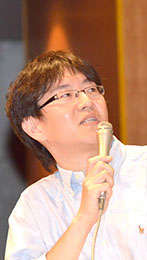

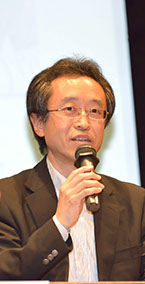
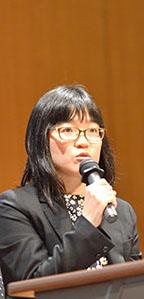
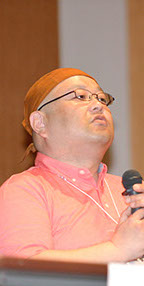
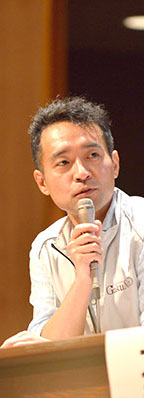
Closing Remark
by Shigeki Yamada, Professor, NII
As a concluding remark, Prof. Yamada summarised the points discussed throughout the day. The main topic of the forum was ‘Thinking and Creating Together a Future of Academic Information Infrastructure’. Although NII has taken in the voices of users in the past, the forum was the first attempt to listen to the users’ voices before actually developing the design of SINET.
Throughout the day, the presenters showed: the possibility of services utilising SDN; the creation of a security cloud; the improvement of access; the expansion of the authentication service, GakuNin, including various certificates; the possibility of an inter-cloud that connects people; and the potential development of Japanese version of NET+.
During the Panel Discussion, panellists discussed: whether SINET is necessary; NII’s role in developing IT professionals; needs for identifying the roles and works of NII; NII’s role in backing-up the collaboration of research and institutions; what is the best relationship between users and providers; and NII’s role in establishing an environment for the academic community and acting as a honey pot.
Yamada closed the forum by saying that NII would like to co-create SINET5 by taking in the voices of the users and reflecting them in the final design.

